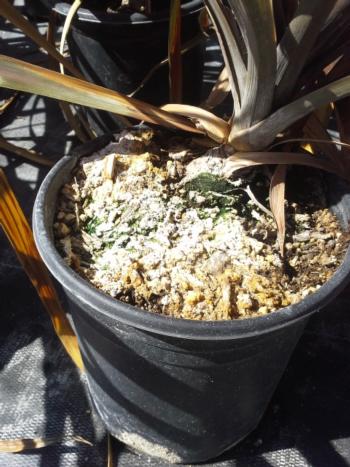GET CULTURED: Reclaimed water use in nursery production
by Donald J. Merhaut
Reclaimed water has become another water source for agricultural use. While the nursery industry has been using recycled nursery water for decades, the use of reclaimed water, which is treated municipal waste water, is relatively recent and is becoming more frequent. As infrastructure is established to deliver reclaimed water throughout the state, more companies and municipalities will be able to utilize this water source. In some areas, reclaimed water is the only water available.
The use of secondary water sources, such as reclaimed water, can present several chemical and physical problems to the agricultural industry; and, like other secondary water sources, modifications in irrigation and fertilizer management programs will alleviate most if not all of these problems. This article will provide an overview of the important chemical and physical properties used to evaluate secondary water sources for irrigation purposes and highlight some concerns, with emphasis on reclaimed water. In subsequent issues, information will be provided on how to properly treat and utilize reclaimed water.
Hydrogen ion activity (pH)
Most ornamental and floriculture crops will grow in a pH range between 5.0 and 6.5, although there are exceptions. Many ericaceous plants such as Vaccinium and Rhododendron plants prefer a more acid media, while most other crops will perform better at pH 6.0. Secondary water sources, such as reclaimed water, may have a pH of 7.0 or greater; therefore, acid injection may be needed to reduce the pH to an ideal range.
Alkalinity
Alkalinity is the measure of the water’s ability to neutralize acid through the concentration of bicarbonates, carbonates and hydroxides. Reclaimed water and groundwater derived from limestone regions tend to be alkaline. If alkalinity is high, more acid will be required to lower water pH.
Electrical conductivity (EC)
Electrical conductivity is the measure of dissolved salts in water. This is a common way of estimating the amount of fertilizer dissolved in irrigation water. However, nonessential salts such as sodium will also increase EC. If a non-fertilizer-fortified water source has a relatively high EC (> 1.0 dS/cm), it may become difficult to use, since once fertilizer is added, the EC can easily approach 3.0 dS/cm, which may not be suitable for many crops. Accumulation of salts in containers (fig. 1) can be a major problem if lower quality water is not treated properly before being used. Management practices such as blending with fresh water of lower EC or filtration may be necessary.

Sodium and other non-essential elements
Of all the non-essential elements, sodium (Na) in reclaimed water is usually the biggest concern. However, other nonessential elements may be present. Nonessential elements are a problem because (1) they will increase the EC of the water, (2) they may accumulate to toxic concentrations in the plant, and (3) they may compete with essential nutrients for uptake into the plant.
Essential plant nutrients
Reclaimed water will usually contain essential plant nutrients such as chlorine (Cl), calcium (Ca), nitrogen (N), etc. Though beneficial, the concentration and the ratio of essential nutrients to one another should be known so that fertilizer inputs can be adjusted appropriately. Too high of one nutrient will result in toxicity of that nutrient or deficiency of other nutrients. Chloride concentrations are often high since chlorine is used to sanitize waste water. Other essential nutrients which may be in excess include sulfur (S) and boron (B). Correcting water quality is easy if a nutrient concentration is not sufficient. However, if a nutrient concentration is too high, it may mean that dilution or some sort of water purification process may be necessary.
Sodium Adsorption Ratio (SAR)
The Sodium Adsorption Ratio (SAR)of wateris the relative ratio of sodium (Na) to calcium (Ca) and magnesium (Mg) in water. As the amount of sodium increases in water, the amount of sodium adsorbed onto clay surfaces increases, which causes clay particles to disperse or “run together.” This, in turn, reduces water infiltration into soil. This chemical-physical problem only occurs on field soils. Even if a nursery utilizes clay-containing soils in the media, the clay amount is not sufficient to raise concern for an SAR problem. SAR problems do not occur in organic soils or containerized media.
Physical impurities
Any algae or other type of particulate matter may be present in reclaimed water. If this is the case, the water must be filtered prior to use. Otherwise, emitters will become clogged, especially if microirrigation is being used. Particulate matter may also leave unsightly marks on foliage if irrigation water is applied by overhead irrigation.
Uniformity of availability and quantity
As with other water sources, the consistent availability of water needed for operations should be known. If sufficient water cannot be provided on a regular basis, then alternative water sources or necessary water storage should be arranged.
In future issues, we will address each of these conditions, presenting the problems in more detail and the correctional protocols.
Don Merhaut is a UC Cooperative Extension Specialist for Nursery and Floriculture Crops, Department of Botany and Plant Sciences, UC Riverside.












